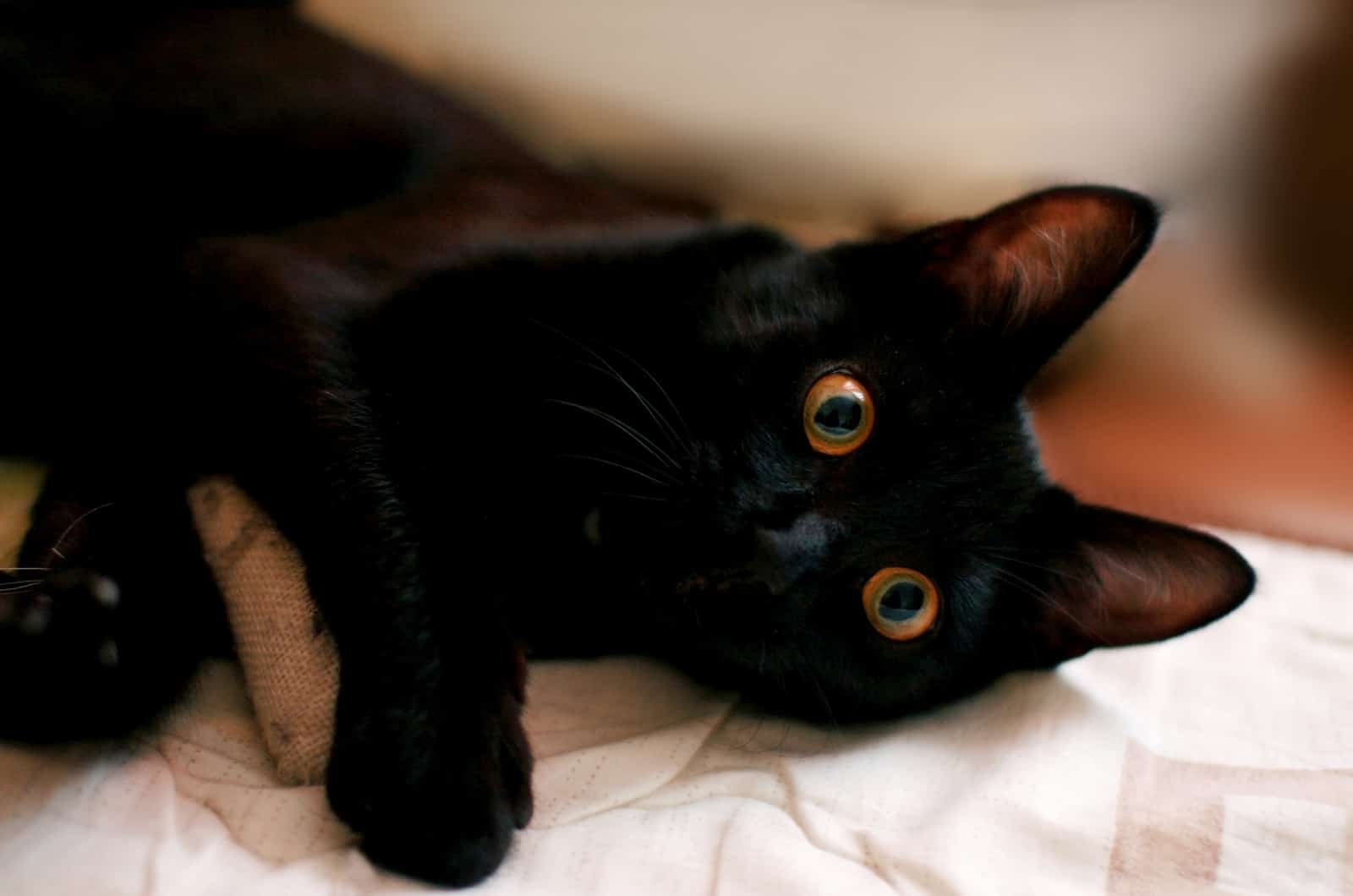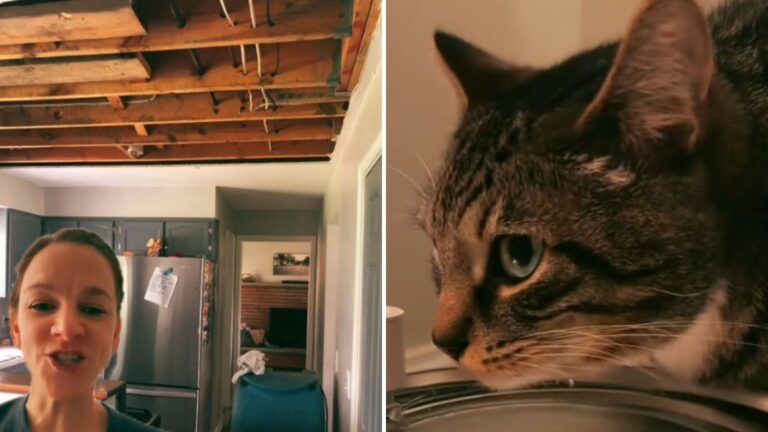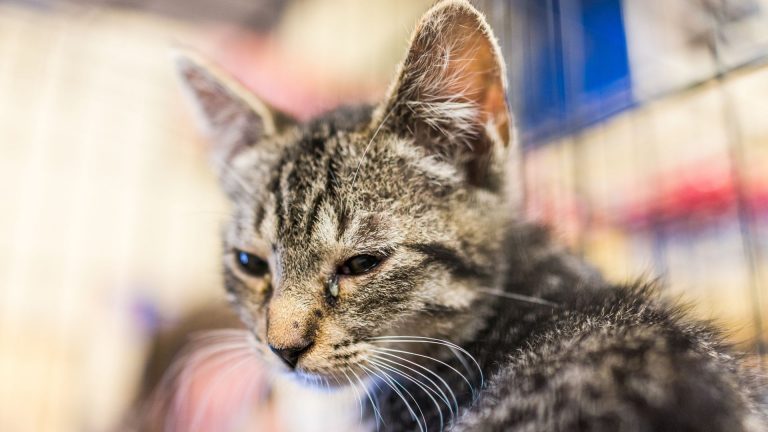How Long Can A Cat Go Without Using The Bathroom? Explained
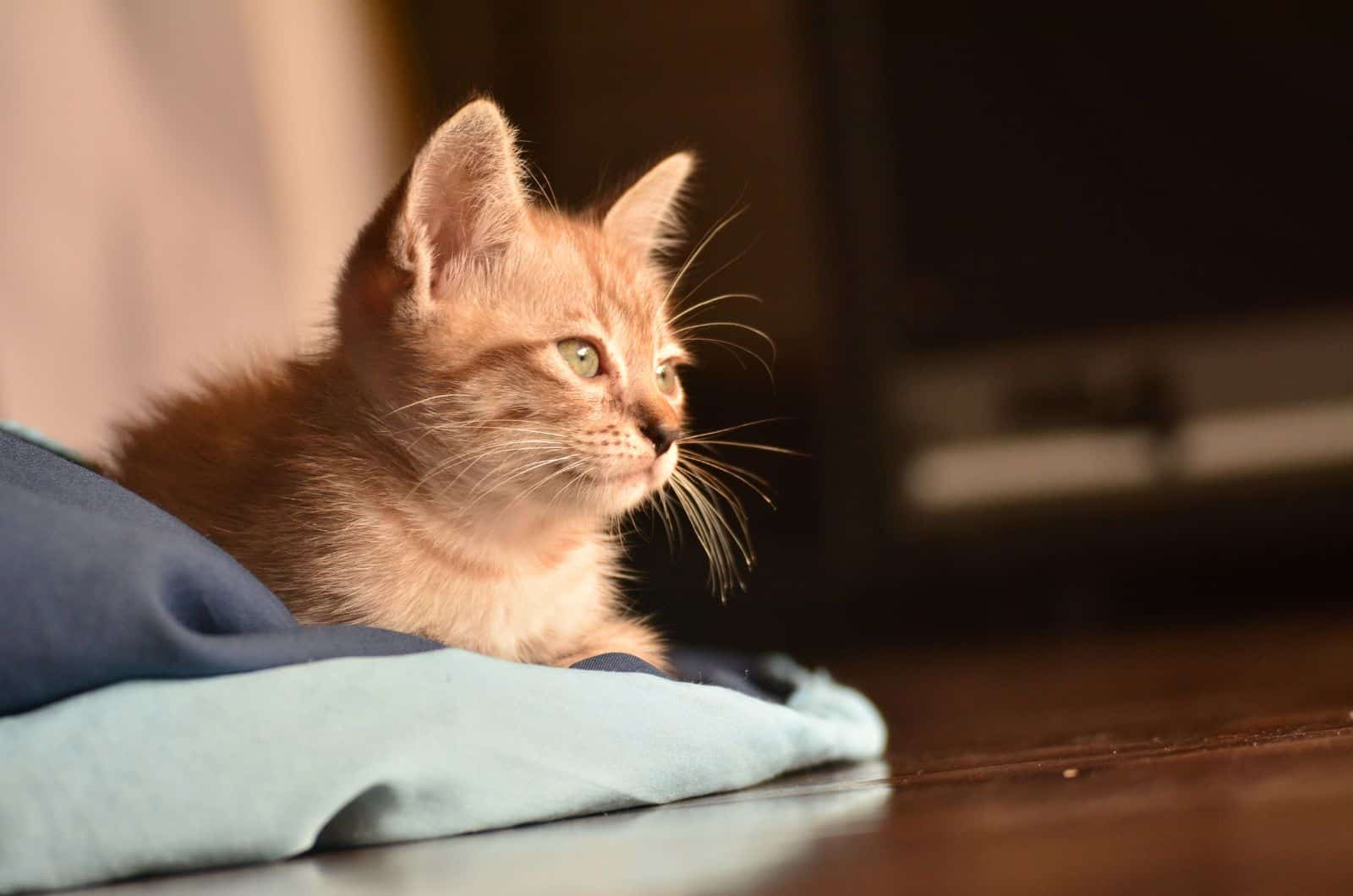
The health of our beloved feline friends is every cat owner’s priority. If your cat has been making more frequent trips to the bathroom, or you go in and see that the litter tray in the cat’s litter box is practically intact, then you may have something to worry about.
You might think “I’ve potty trained my cat, why is it constantly going to the bathroom“ or “Why isn’t my cat going to the bathroom at all?!“ These are all normal concerns, especially in adult cats or cats that are in their older years.
This help guide will surely answer all your questions and ease any concerns you have when it comes to your cat’s health. We will examine the medical reasons for changes in urination or bowel movements, specifically cats withholding urine or poop. So, how long can a cat go without using the bathroom, i.e. the litter box? Continue reading to find out everything you need to know.
How Long Can A Cat Go Without Peeing Or Pooping?
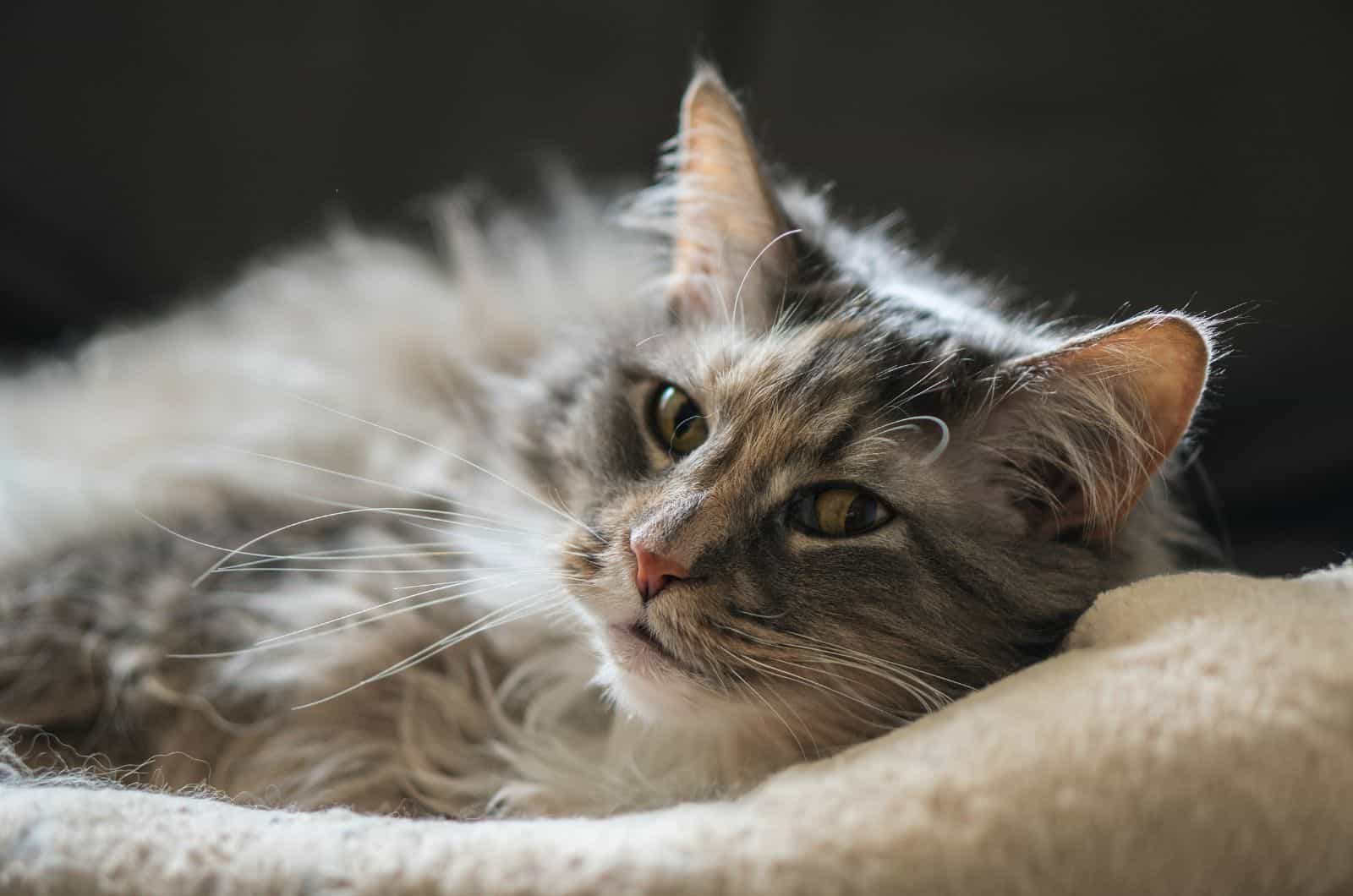
Cats can hold their pee for 24 to 48 hours and typically defecate once each day. Kittens, on the other hand, urinate and defecate more often. They defecate two to three times per day and pee two to four times each day. Most cats can also hold their feces for 24 to 48 hours without incident.
On average, healthy cats defecate one or two times every day. However, every cat is different, and it is possible that your cat poops just once every two days. This is deemed healthy as long as it does not go for more than 48 hours without pooping.
Most Common Health Issues
Some health problems associated with cats not peeing or pooping include stress, dehydration, injuries, and more serious illnesses or disease.
If a cat has urinary problems, they are most likely holding in their pee due to FLUTD (feline lower urinary tract diseases), urethritis, cystitis, other urinary tract infections, or a urinary blockage.
When it comes to troubles with pooping, cats might be suffering from diabetes, arthritis, hyperthyroidism, megacolon, kidney disease, anal sac disorder, or constipation.
• Stress – One of the most common causes of a cat’s inability to urinate or defecate is stress. This might be due to a change in daily habits, meeting a new pet, separation anxiety, or even being put in a carrier while traveling. Try to introduce changes into her life gradually.
If you decide to bring home a new pet, take your time introducing your cat to the new cat or dog. If you’re taking your cat on a road trip, make sure to let her out of her box to pee or poop every six hours if it’s a long trip.
• Dehydration – Dehydration leads to constipation, i.e. constipation can result from a lack of fluid in the cat’s body, making it much more difficult for it to defecate on a regular basis. You should always pay attention to when your cat is drinking water and fill the water bowl with fresh water regularly to keep up with hydration, especially during hotter days.
• Injuries – Urinary problems can occur if your cat falls or has some kind of an accident, which can harm your cat’s pelvic nerves and injure the cat’s bladder and/or urethra.
Now, let’s get into detail on the symptoms and causes of certain medical conditions that may affect howcats use, or don’t use, the litter box.
1. FLUTD
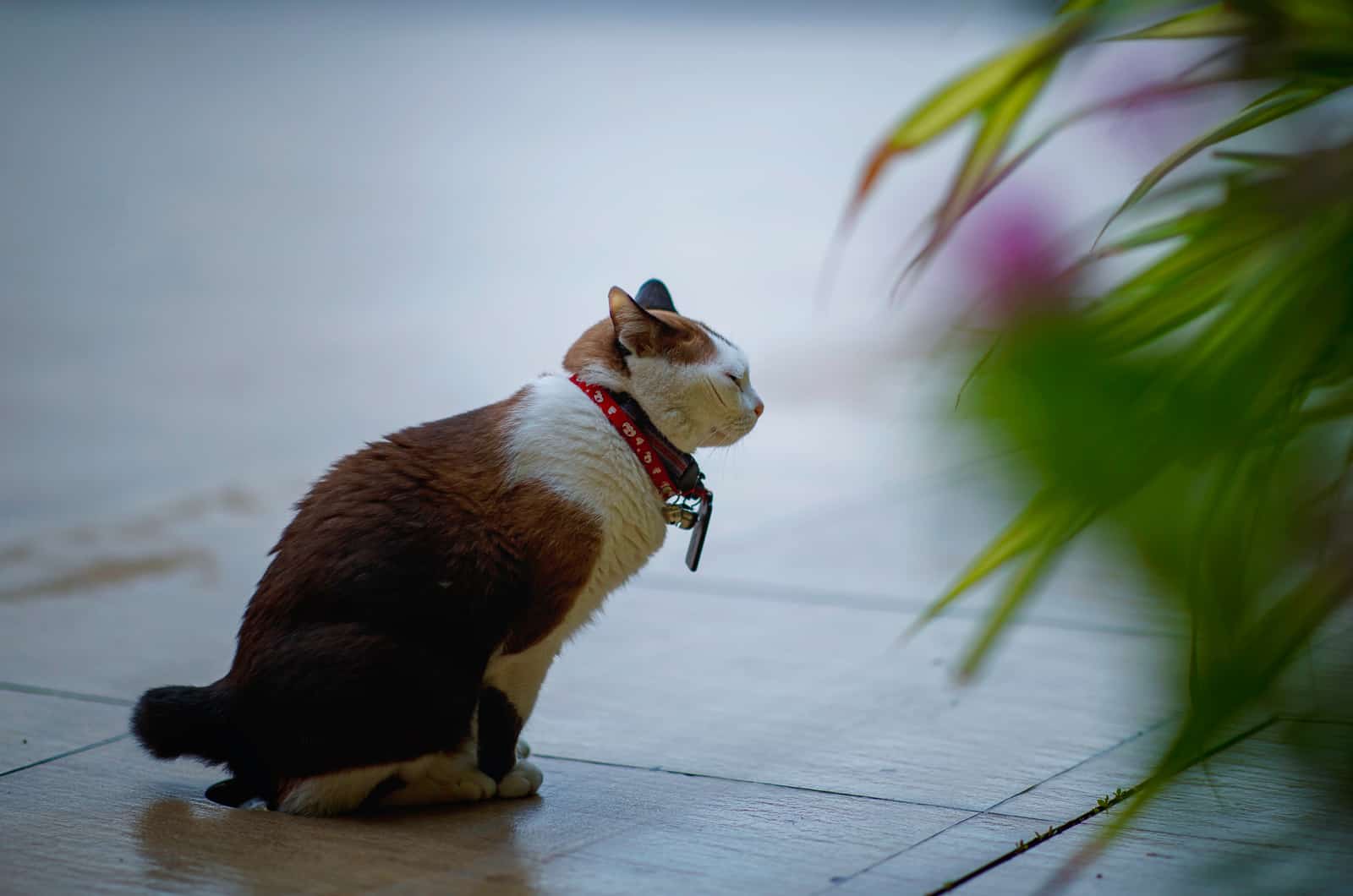
FLUTD, i.e. Feline lower urinary tract disease is a condition that affects the cat’s bladder and urethra, and it can happen at any age. However, FLUTD most commonly occurs in overweight or middle-aged cats.
Most common symptoms of FLUTD include:
• Difficulty urinating
• Frequently trying to pee
• Loud meowing while trying to pee
• Peeing in small amounts
• Urinating for too long
• Peeing outside of the litter box
• Licking its private parts excessively
• Blood in cat urine
You might also want to check out: Why Is My Cat Leaving Blood Drops Behind? Explanation Below!
As you can see, there are many different symptoms that cats may display when they have FLUTD, so diagnosis isn’t straight-forward. Your vet will examine your cat, and based on what you tell them and what they see at the physical examination, they will establish a diagnosis. Most likely, the vet will perform a urinalysis as well, and if the cause of your cat’s state is still undetected, the vet might run a urine culture test, blood tests, x-rays, or supplementary urine tests.
Causes of FLUTD in cats most usually include: urinary infections, urethral obstruction, urolithiasis, or cystitis, which can also occur without it developing into FLUTD.
How To Help
• Always provide your cat with fresh, clean water
• Give your cat smaller meals, more frequently
• Put the litter box in a quiet space
• Keep the litter boxes clean at all times
• Provide your cats with sufficient litter boxes
• Talk to your vet and set the perfect diet plan for your cat
All in all, it depends on the underlying cause and the diagnosis the vet gives you. You can use some of these tips to reduce stress and to take even better care of your cat. However, your vet will instruct you exactly what to do once they set the diagnosis for your cat.
2. Urethritis
Urethritis is inflammation of the urethra caused by trauma, infection, or even malignant tumors. The urethra swells and therefore narrows, and the narrowing of the channel restricts urine flow, which further contributes to urethral blockage. Problems with urination and an increased need to urinate will occur. Both male and female cats of any age can develop urethritis.
Symptoms:
Cat feels irritation and pain when trying to pee
• Increased urge to pee
• Difficulty urinating
• Inability to pee
• Blood in cat’s urine
• Pain in the lower abdominal area
• Blood or discharge from cat’s private parts
How To Help
The care and treatment given will depend on the underlying cause of the urethritis, if it is discovered. If urethritis is caused by a bacterial infection, the veterinarian will prescribe medicines to help clear the germs from the cat’s system.
3. Cystitis
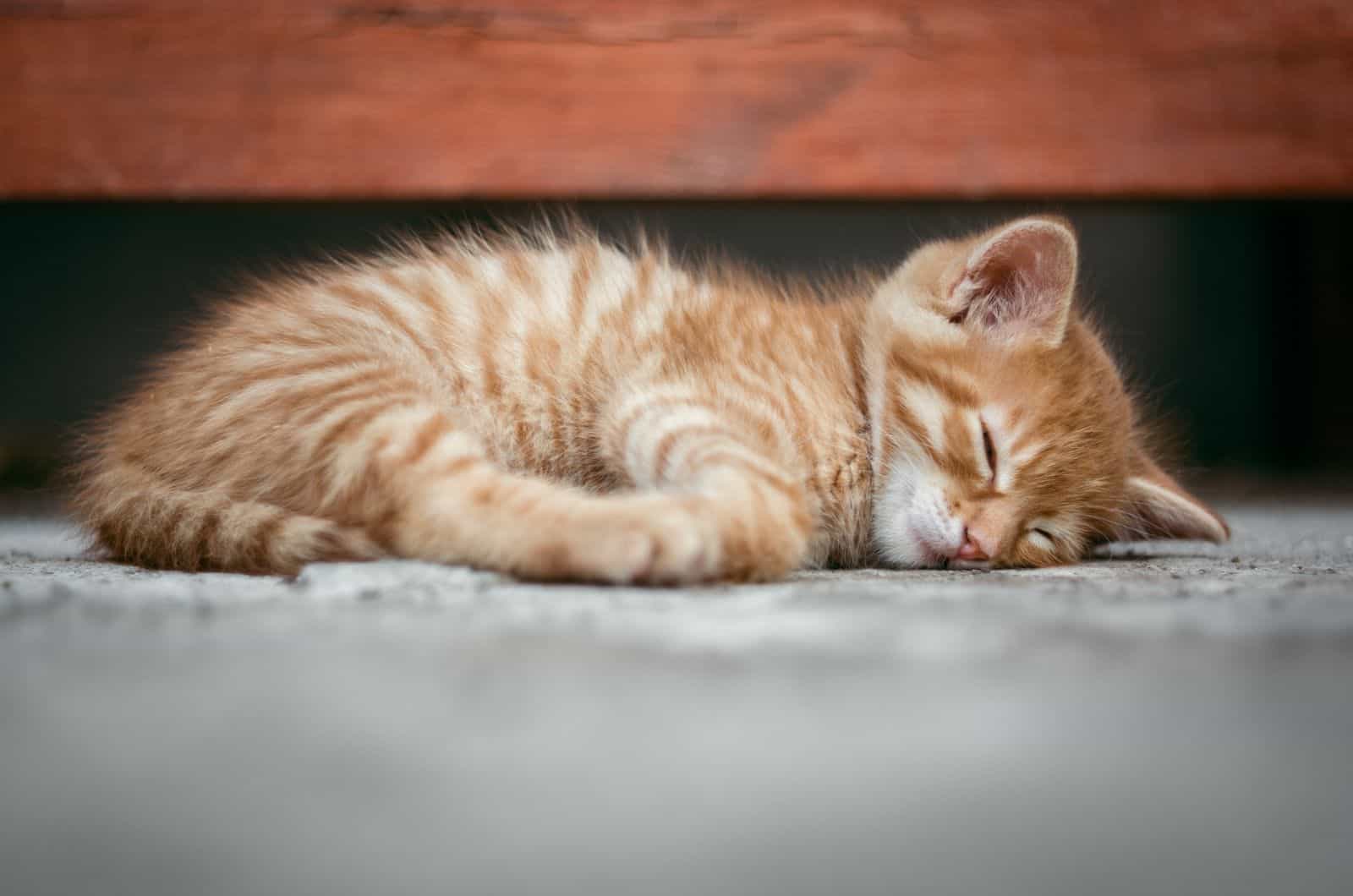
Cystitis is the term generally used for inflammation of the cat’s bladder. Cystitis does not always have a definite underlying cause.
As previously stated, disorders affecting the lower urinary system (bladder and urethra) in cats are sometimes included under the name feline lower urinary tract disease. This is due to the difficulty in distinguishing between various illnesses of the bladder and urethra, and many disorders impact the whole lower urinary system.
The symptoms of cystitis are the same as for the FLUTD.
4. UTIs
Urinary tract diseases are more common in cats than infections. Cats with urinary tract infections are usually 10 years old or older and these cats will typically have some other illness, like hyperthyroidism or diabetes mellitus. If your feline pet has a urinary tract infection, your veterinarian will most probably prescribe an antibiotic to help fight the illness.
Symptoms:
• Decreased urine amount
• Difficulty peeing
• Pain or discomfort when trying to pee
• Blood in urine
• Cat peeing outside of the litter box
• Inability to pee at all
How To Help – Urinary problems in cats can be complicated and dangerous, therefore the first thing you should do is go and see your vet for prompt treatment. Treatment will be determined by the underlying reason for your cat’s urine issues.
5. Blockage
Urethral blockage is a potentially fatal emergency that arises when material from the bladder becomes blocked and cannot pass through the small urethra. Crystals, bladder stones, silt, or other debris can build up and create a urethral blockage, preventing urine from draining. Male cats are more likely to be impacted since their urethras are longer and narrower.
When the urethra becomes partly or totally clogged, urine cannot escape from the bladder. Urethral blockage is a common illness in cats.
Symptoms:
• Cats having difficulties peeing
• Pain in the lower abdominal area
• Cats crying when touched or when they pee
• Cats feeling lethargic and weak
• Loss of appetite
• Nausea and/or vomiting
How To Help
If the vet establishes that there is a blockage, hospitalization will be required for immediate treatment and stabilization. The immediate goal of therapy is to re-establish urine flow, remove any toxins that have built up, and return electrolyte levels to normal. If you notice any of the aforementioned symptoms in your cat, especially the inability to urinate, then call a vet right away.
Cats suspected of having a urinary obstruction require immediate medical attention. If a stone is obstructing the urethra, the doctor will have to sedate your feline buddy in order to insert a catheter into the urethra and push the stone back into the bladder.
The bladder is then cleansed and emptied through the catheter, ensuring that nothing toxic remains inside. Typically, the catheter is kept in place until the edema (swelling) diminishes. The vet will examine the cat again once the catheter is withdrawn. It is important to determine whether the cat is able to pee on their own, and after this is determined, the vet may administer pain relievers, a change in food, or more medicine to assist your pet relax.
See also: How Long Can Cats Hold Their Pee? Help Guide
6. Diabetes

Diabetes mellitus, is the inability to generate enough insulin to control glucose levels in blood. This condition afflicts an increasing number of cats. If left undiagnosed and untreated, it can cause weight loss, lack of appetite, vomiting, dehydration, severe depression, motor function issues, coma, and sometimes even death.
Symptoms:
• Increased thirst
• Peeing more often than usual
• Increased appetite
How To Help
A prescribed diet plan is a must; the best option is the one that is low in carbohydrates. Another option is insulin therapy which is also prescribed by the vet. You should never adjust the insulin treatment dosage on your own, you should always consult the vet about it. Of course, more frequent trips to the vet are necessary, every three months if possible.
7. Arthritis
Cat arthritis is a common illness that causes discomfort in the joints and makes movement difficult for your cat. Although there is no cure for feline arthritis, you can help your cat feel and live better. If you see your cat moving slowly or if it seems to be experiencing pain or discomfort, schedule an exam with the vet as soon as you can.
Symptoms:
• Cats hide away or sleep more
• Cats don’t jump as high as they used to
• Cats spend less time grooming
• Cats are irritated and less active
• Cats experience difficulties when using the litter box
• Cats’ legs are stiff
• Cats limp or find it difficult to go up and down stairs
• Cats are reluctant to jump or climb
How To Help
Based on the severity of the symptoms and a physical examination, your vet will set a diagnosis and decide on the required treatment. The things you can do to help include:
• Always provide a warm, cozy spot for your cat to nap in
• Provide an easy access litter box
• Use softer brushes when grooming your cat
• Put all your cat’s necessary things (litter box, food, and water bowls, etc.) on the same floor so it can avoid stairs
• Pay attention to your cat’s diet to prevent excess weight gain
8. Hyperthyroidism
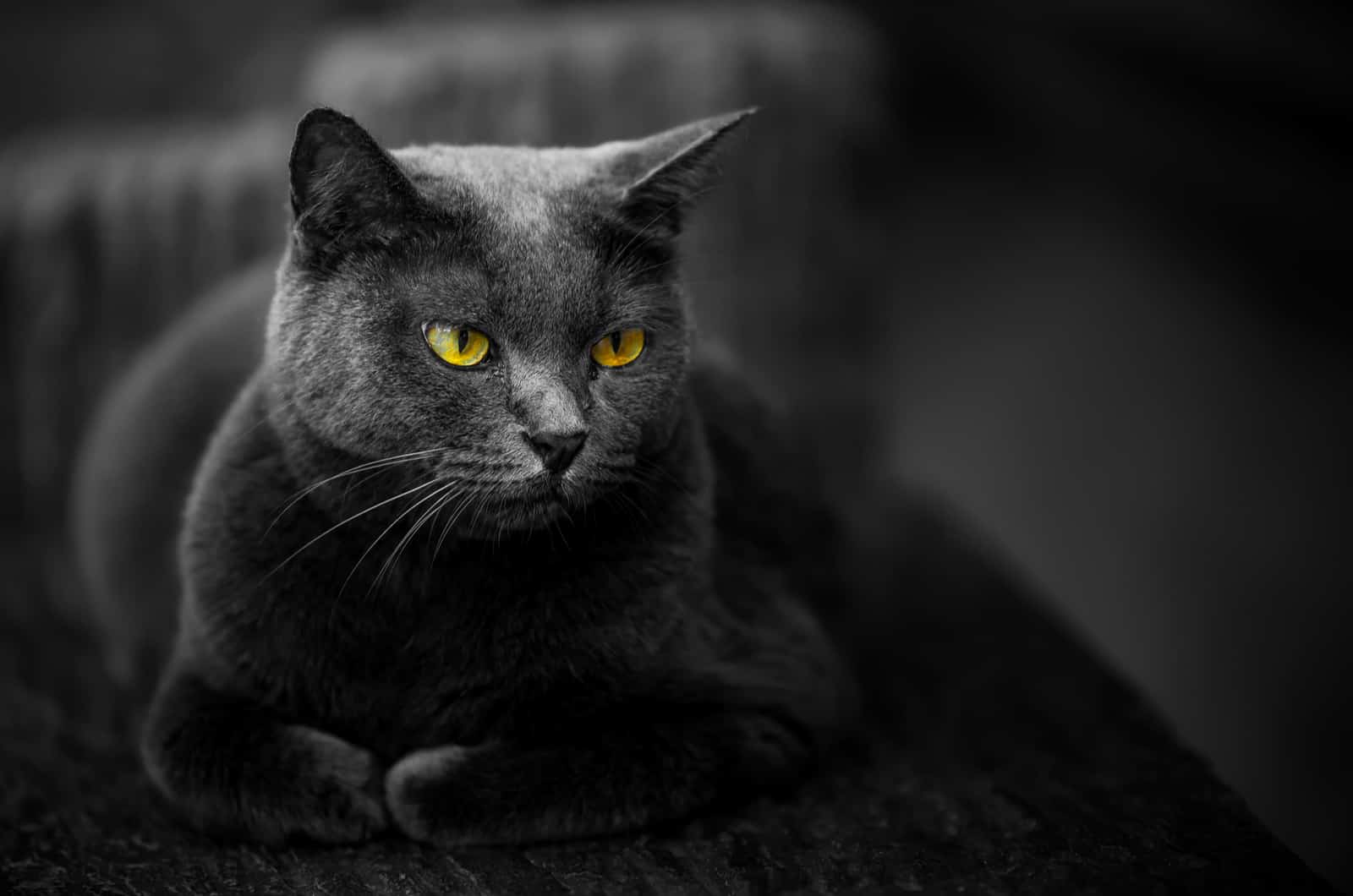
In hyperthyroidism, the thyroid gland generates too many thyroid hormones. This is the most frequent endocrine disorder in cats over the age of eight years.
Symptoms:
• Weight loss
• Increased appetite
• Diarrhea or vomiting
• Hyperactive behavior
• Excessive thirst
• Excessive urination
• Cat’s coat is dirty
Hyperthyroidism is frequently associated with high blood pressure (hypertension) and cardiac disease. High blood pressure is caused by the heart’s increased pumping pressure.
How To Help
After the vet diagnoses your cat with hyperthyroidism, you will be given further guidance. Options might include radioactive iodine therapy, medication, a prescribed diet, or surgery.
9. Megacolon
Megacolon refers to the huge growth of the colon associated with constipation. The muscles of the colon won’t contract adequately if the nerves to the colon don’t work well.
When this happens, the muscles stretch and the colon expands. The diameter of an enlarged colon may be three to four times that of a typical cat. Instead of being forced into the rectum normally, fecal material collects in the dilated colon, causing severe constipation known as obstipation.
Symptoms:
• Difficulty pooping
• Loss of weight
• Lethargy
• Loss of appetite and/or vomiting
How To Help
Your vet will first do all it takes to help, which might include the usage of laxatives or stool softener meds, and putting your cat on a high fiber diet. This doesn’t cure any underlying diseases that might cause megacolon, but it will help relieve your cat of the build-up in it.
The prognosis is favorable if muscular function restores and constipation disappears with medication; but unfortunately, recurrence is common in many cats. Pet owners must be active in managing feces production for their cats if this happens, to avoid serious recurrence. If a cat is generally healthy and has a healthy colon, specialized or prescription diets and meds may be beneficial.
10. Constipation
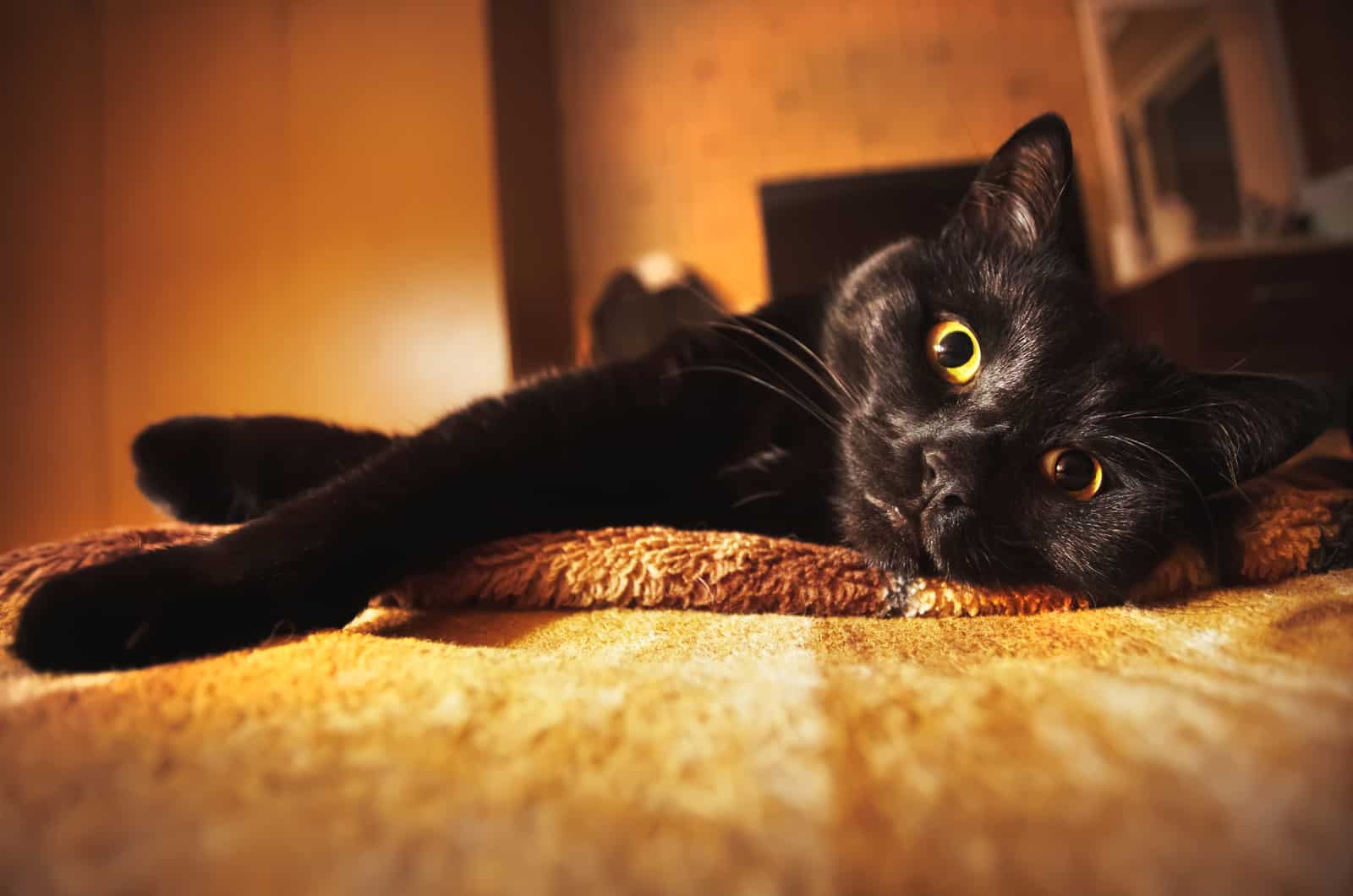
The average cat will defecate every 24 to 36 hours. Constipation is the most likely cause of your cat pooping less regularly, straining when she tries to defecate, or not leaving anything in the litter box. It’s a frequent condition in cats, but it’s typically mild enough to be treated at home. Constipation can develop if the intestines are not emptying regularly.
Symptoms:
• Dry or hard stools
• Cat frequently going in and out of the litter box
• Difficulty pooping (loud meows when cat tries to poop)
• Cat avoiding the litter box
• Cat not pooping because it’s too hard or painful to do so
If an underlying illness is the cause, you might also notice other symptoms, including loss of appetite, difficulty jumping, hiding away, weight loss, peeing more, vomiting or nausea, and/or cat walking unsteadily and stiffly.
How To Help
Your vet will prescribe medical treatment according to their diagnosis of your cat’s condition, but there are also things you can do at home to help your cat get better:
• Reduce stress in the home
• Reduce anxiety
• Help your cat stay active
• Set up a new food diet according to vet advice
• Give your cat foods rich in fiber
• Ask the vet about adding probiotic supplements
• Consult the vet about laxatives
See also: Prolapsed Rectum Kitten: Causes, Symptoms And Treatment
11. Kidney Disease
Feline kidney disease can be the unintended consequence of your cat not urinating at all or not peeing as much as they should. Normal kidneys do an excellent job of removing protein waste, generating urine, and clearing toxins. However, when kidney disease occurs, the kidneys become less efficient in performing these vital functions. There are two distinctions when it comes to kidney disease in cats, acute and chronic kidney disease.
Acute illness appears unexpectedly, although it is typically treatable and curable with the appropriate treatment and care. Poisoning is the most prevalent cause of acute renal illness in cats, such as when they are exposed to plant toxins, human medications, or cleaning agents.
Chronic kidney disease progresses at a slower rate than acute renal disease. It progresses slowly but worsens if not detected and treated promptly. If you do not become aware of it and the condition continues, it is usually incurable and must be managed as a chronic disease.
Some general symptoms associated with kidney diseases in cats include:
• Urinating more frequently
•Excessive water intake
• Frequent feline bacterial infections (kidney and bladder)
• Loss of weight and appetite
• Diarrhea, vomiting
• Bad breath and/or mouth ulcers
• Constipation
• Lethargy
How To Help
Your vet will instruct you on the appropriate treatment, which might include medications, special food diets (less kibble, more wet food), increased intake of vitamin D, omega-3 acids, and lower protein and phosphorus levels.
Remember to introduce any new change in your cat’s life gradually and slowly. You can provide your cat with the best possible life by providing plenty of clean fresh water, a well-planned diet, a peaceful environment, and frequent check-ups.
12. Anal Sac Disorder
On each side of the rectum, cats have anal glands, i.e. anal sacs. These, together with excrement scent or urine, assist them in marking their territory. Cats do not require anal sacs, and if they’re healthy, you shouldn’t be concerned. When a cat poops, the anal glands contract and release anal gland secretion.
This is an extremely stinky black liquid that comes out alongside the excrement. When there are a lot of germs or inflammation, the anal glands might get blocked or diseased. This is more prevalent in dogs than in cats, but it can happen to either.
Several factors can cause the anal sacs to become inflamed or infected. When the anal sacs swell, the fluid in the sacs cannot be effectively discharged when cats poop. In this case, the sacs can become blocked, and the fluid thickens and darkens.
Symptoms:
• The cat will scoot or drag its butt across the floor
• Cats lick and/or bite their tail or rectal area
• Swelling of the rectum area
• Bloody discharge
How To Help
Anal sac disorder is treated by expressing the sacs and flushing away the hardened substance. Anti-inflammatory and antibacterial medications may also be administered to the afflicted sac. In order to kill the germs, the anal glands must be expressed and oral medicines administered to the cat.
Fortunately, this problem is uncommon. During the surgical procedure, the nerves that regulate the muscles around the anal sphincter are altered, resulting in improper defecation when walking, sleeping, or laying down. In most cases, this incorrect defecation habit will improve during recovery and is merely a temporary issue.
You might also be interested in: Cat Scent Glands: The Where, The What & The Why
How Long Can A Cat Go Without Using The Bathroom Before It’s Dangerous?
No longer than 48 hours. As previously indicated, cats may retain their pee or poop for up to 48 hours, but they should not do so for any longer. If your cat is still unable to pee after 48 hours, they may have serious problems. Without peeing and/or pooping, they could be in a life-threatening situation in 72 hours.
Despite the cat’s ability to hold pee and poop for 48 hours, toxins can accumulate and harm your beloved pet over time. If your cat is unable to pee, you should visit a veterinarian as soon as possible to avoid harm.
Final Words
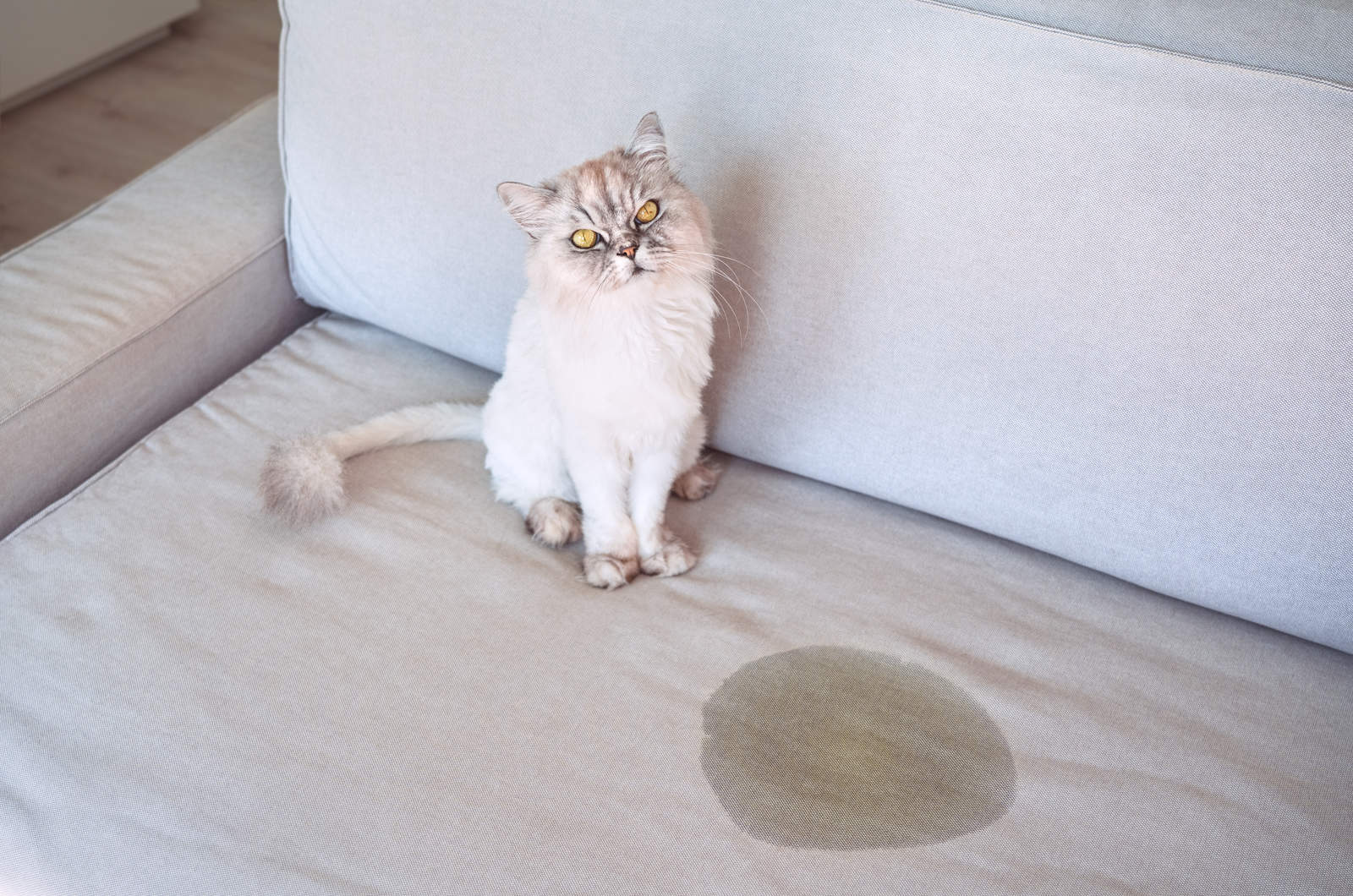
The health of our beloved feline friends is every pet parent’s priority. If your cat’s been making more frequent trips to the bathroom, and you go in and see the litter box is still clean, it’s perfectly normal to worry. As aforementioned, cats can go without using the bathroom for around 48 hours, but if it goes on for any longer than that, you should seek a vet’s help.
Early intervention is the most effective way to avoid severe health issues, and you’ve already begun by reading this article and learning more about your cat’s bladder and bowel movements. So, to conclude, how long can a cat go without using the bathroom? The final answer is 24 to 48 hours.
Related Articles:
How To Get Rid Of Cat Litter Smell In Apartment Top 8 Ways

